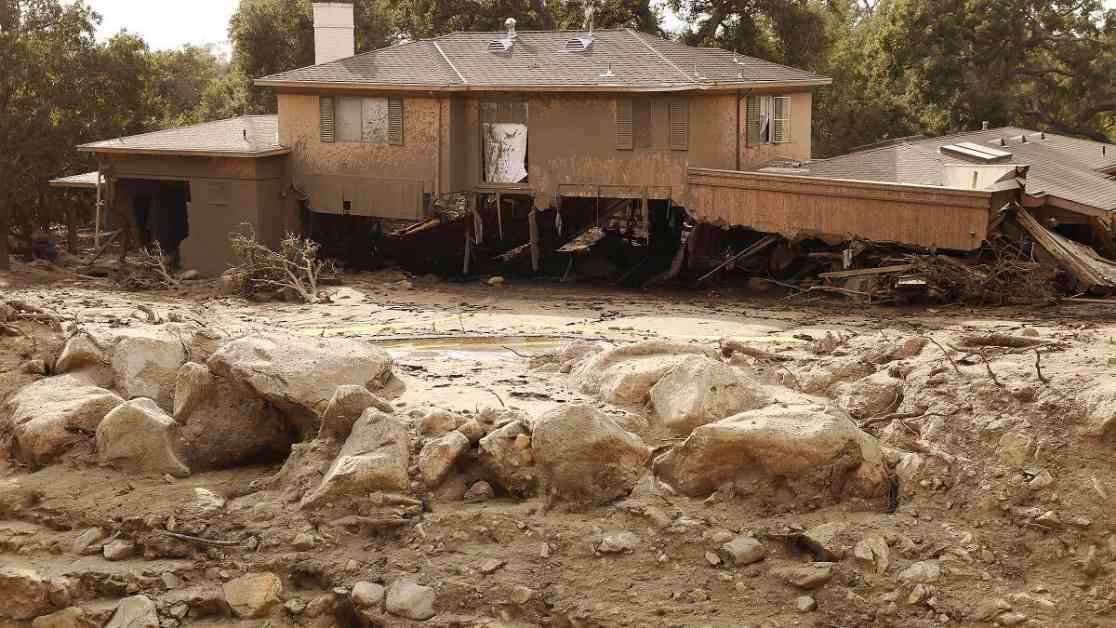California Braces for Landslide Threat After Devastating Fires
Southern California is on high alert this week as a powerful atmospheric river is poised to bring heavy rains to the region, potentially triggering dangerous debris flows. While rain is expected to start on Wednesday morning, the greatest risk is anticipated for early Thursday, extending through Thursday night or Friday morning. Meteorologists are forecasting significant rainfall, with estimates ranging from 2 to 4 inches along the coast and valleys, and 4 to 8 inches in the mountains and foothills.
The National Weather Service has issued warnings for Santa Barbara and San Luis Obispo counties, where there is a 60% chance of experiencing high levels of rainfall. In Los Angeles and Ventura counties, the likelihood is slightly lower at 40%. The increased risk in these areas is a cause for concern, as it could lead to devastating consequences for communities already reeling from a tumultuous winter fire season.
Landslides, a perennial threat in California, are exacerbated by the aftermath of wildfires. The loss of vegetation following a fire leaves hillsides vulnerable to erosion, increasing the likelihood of mudflows and debris flows during heavy rain events. The combination of scorched earth and intense rainfall sets the stage for potentially catastrophic landslides, endangering lives and property in their path.
The Different Types of Landslides
When it comes to landslides, there are several distinct categories that hydrologists use to describe these natural phenomena. Mudflows consist of water and mud rushing downhill, typically less than 15 feet deep. Debris flows, on the other hand, involve a rapid downhill flow of water that picks up rocks, branches, and sometimes massive boulders, posing a greater threat to communities in their trajectory.
While the term “mudslide” is commonly used by the public to describe these events, hydrologists prefer the more specific terminology of mudflows and debris flows. Regardless of the nomenclature, the destructive potential of these landslides is a constant concern for residents living in high-risk areas.
The Mechanics of a Debris Flow
Rainfall rates are a critical factor in triggering debris flows, with a threshold of half an inch per hour typically marking the point at which these events can occur. Higher rates of rainfall increase the risk of significant debris flows, posing a serious threat to communities in burn areas. Even after the rain subsides, the risk of shallow landslides persists, with saturated hillsides prone to collapsing and causing localized damage.
The aftermath of wildfires leaves hillsides vulnerable to debris flows for several years, as the regeneration of vegetation is a slow process. The first year or two after a fire pose the highest risk, with the threat decreasing over time as vegetation regrows. However, the unpredictability of deep-seated landslides serves as a constant reminder of the enduring dangers posed by these natural disasters.
A Case Study in Landslide Vulnerability
The history of devastating landslides in California serves as a sobering reminder of the potential risks faced by communities in high-risk areas. From the tragic events in Montecito following the Thomas Fire to the destructive debris flows in Love Creek and La Crescenta Valley, the state has a long history of grappling with the aftermath of wildfires and their impact on the landscape.
One notable example is the Bluebird Canyon landslide in Laguna Beach, which occurred on a rainless morning in June 2005. Despite the absence of recent rainfall, heavy rains in the preceding months destabilized the hillside, leading to the destruction of multiple homes. The vulnerability of communities like Bluebird Canyon underscores the ongoing challenges faced by residents in landslide-prone areas.
Conclusion
As California braces for the impending threat of landslides following devastating wildfires, the need for proactive measures to mitigate risks and protect communities is more urgent than ever. By understanding the dynamics of debris flows, the impact of wildfires on landslide vulnerability, and the ongoing challenges posed by these natural disasters, residents can better prepare for the potential hazards they may face in the coming days and years.
Ultimately, the resilience of Californians in the face of these challenges is a testament to the strength and unity of communities that continue to persevere in the wake of adversity. As the state confronts the dual threats of wildfires and landslides, the importance of preparedness, awareness, and collective action cannot be overstated. Let us stand together in solidarity as we navigate the uncertain terrain of nature’s forces, united in our commitment to safeguarding lives and livelihoods from the ever-present dangers that loom on the horizon.


